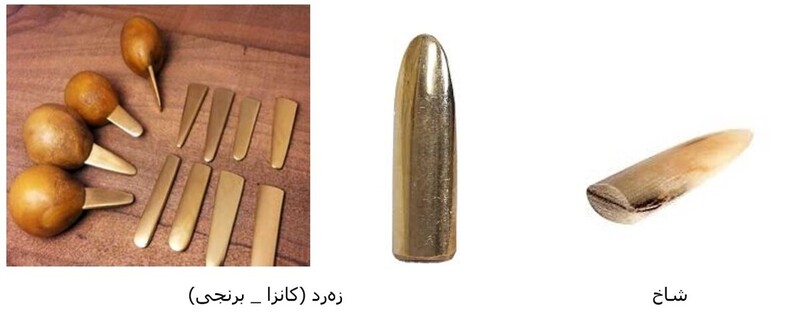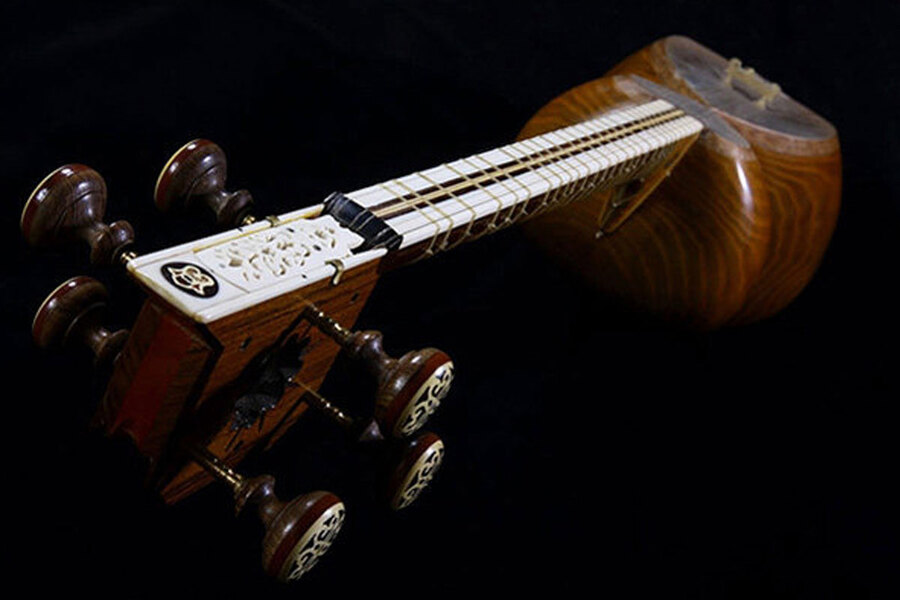Tar instrument
- This instrument is known as Tar.
- It belongs to the family of stringed instruments played with the help of the bow.
- It is made of berry and walnut trees.
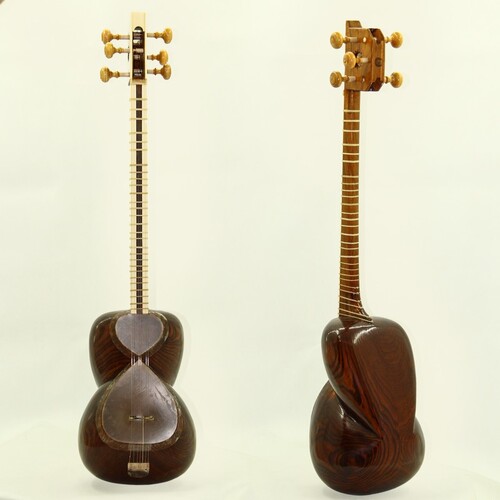
- This instrument is made up of the following parts:
- Body (sound box), skin, neck, the surface of the neck, pegbox, string, peg, bridge, key, plectrum
- Body (sound box)
- The body of the tar instrument is made of the trunk of a berry tree.
- The body of the instrument looks like a pear. There is a small bowl at the top and a large bowl at the bottom which is dug up.
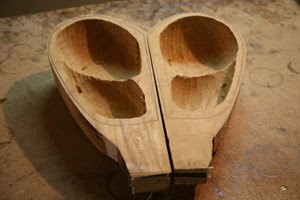
- First, the trunk of the berry tree should be emptied inside in this way.

- After digging up, it is linked together.
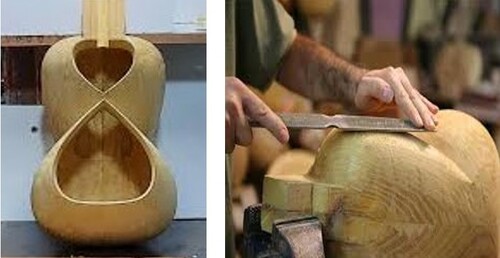
- Finally, it is smoothed.
_ Skin
- The skin of lamb or catfish is used to make Tar.
- Good skin should be oil-free, smooth, soft, and thin.
- When the strings are tightened, a lot of weight falls on the skin. Holding the skin on the instrument is an important task and requires skill and expertise. Knowledge of the degree of looseness and tightness of the skin will prevent tearing and puncture and affect the good sound of the instrument.
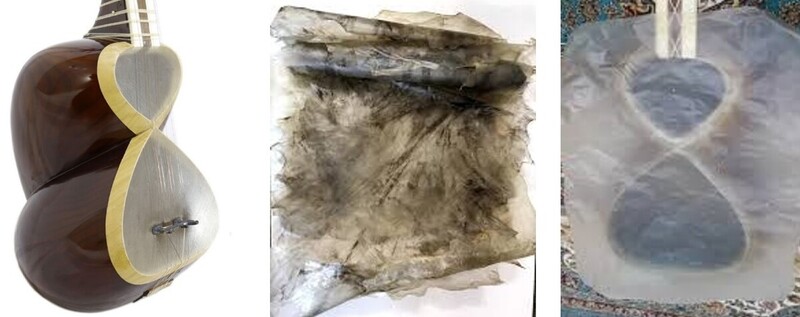
- Neck, surface (top), pegbox
- The length of the neck is forty-five to fifty centimeters. The neck is made of the walnut tree.
- One end of the neck goes into the top of the body and camel bones are placed on the edges of the neck.
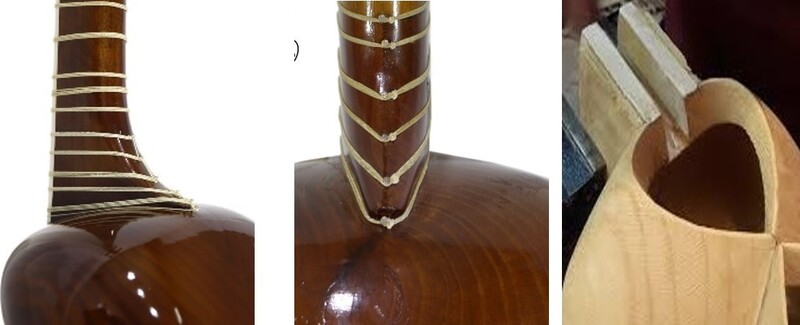
The neck of the body
- The other end is stuck in the pegbox.
- The pegbox is the place to hold the keys, which are six.
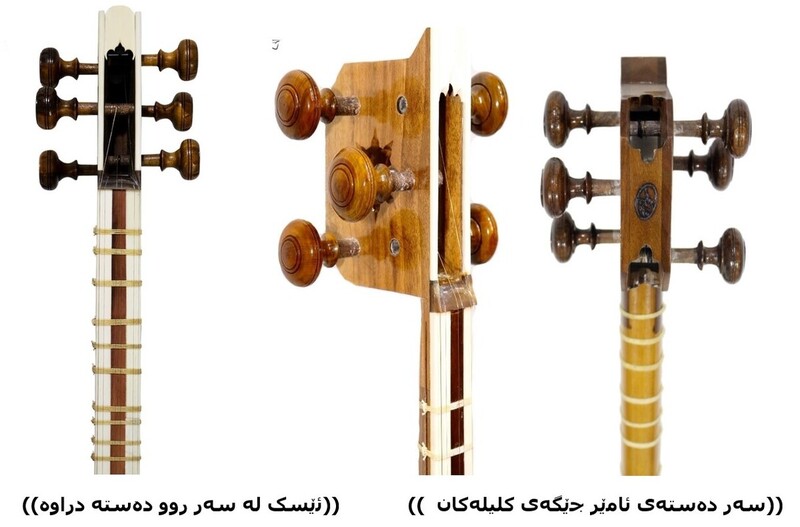
_ String, string holder, bridge
- The strings of this instrument are metal like the strings of the instruments of Tamira, Santur, and Diwan.
- There are six strings: two white strings (20-22), two yellow strings (22-25), a white string (20-22) and a thicker yellow string (35). Each has its own size characteristics.

String holder:
- The string holder is made of animals' antlers.
- The fixed position of the string holder is at the bottom of the body.
- One end of the strings is tightened from the string holders and the other end from the keys.

Bridge:
- It is made of antlers or bones.
- The bridge of the Tar instrument is five by two centimeters and is placed on the skin. Small holes are made in it and attached to the string holder with a thread or string.
- The bridge is directly in contact with the skin of the instrument and the place of the instrument's strings is determined on it. The vibration of the strings to the bridge, from there to the skin, and then into the body of the instrument causes sound.

Frets:
- It is made of the gut of sheep and cows.
- 25 frets are tied on the neck of Tar.
- 13 frets are tightened in three rounds and 12 in four rounds. (It has special rules).
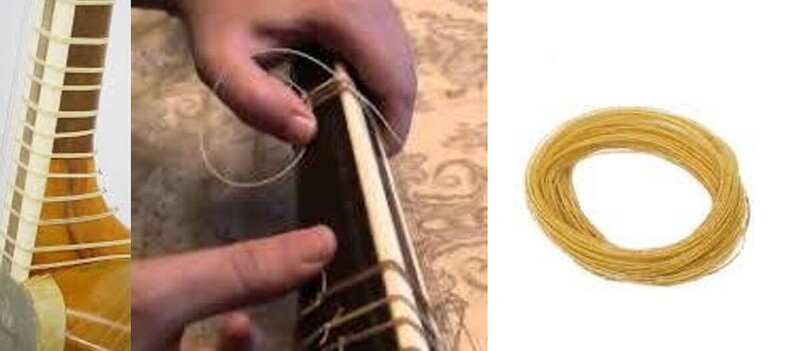
_ Key
- Keys are made of walnut trees.
- The Tar instrument has six keys.
- Each string has its own key and loosening, tightening, and holding the strings is done with the help of a key.

_ Plectrum
- It is made of animal antlers or metal.
- It is held with two fingers of the right or left hand (for left-handed players) and the sound of the instrument is produced by hitting the plectrum on the strings.
